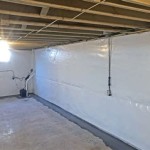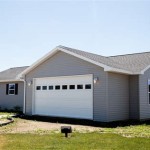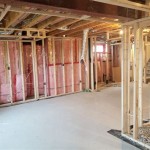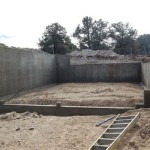Recommended R-Value for Basement Ceiling
The R-value of a basement ceiling measures its resistance to heat flow. A higher R-value indicates better insulation and lower energy costs. The optimal R-value for a basement ceiling depends on several factors, including climate, building code requirements, and the desired level of comfort.
In general, a higher R-value is recommended for colder climates to prevent heat loss from the basement. For example, the International Energy Conservation Code (IECC) recommends an R-value of at least R-30 for basement ceilings in Zone 5, which includes most of the northern United States. However, in warmer climates, such as Zone 1 or 2, a lower R-value may be sufficient.
Building code requirements may also dictate the minimum R-value for basement ceilings. It is important to check local building codes to ensure that your insulation meets the required standards.
In addition to energy efficiency, the desired level of comfort should also be considered when choosing the R-value for a basement ceiling. A higher R-value will help to keep the basement warmer in winter and cooler in summer, providing a more comfortable living environment. If the basement is frequently used for activities such as recreation or storage, a higher R-value may be beneficial.
The type of insulation used for the basement ceiling will also impact the R-value. Common insulation materials include fiberglass batts, cellulose, and spray foam. Fiberglass batts are typically the most cost-effective option, but they have a lower R-value than spray foam. Cellulose insulation provides a good balance of cost and R-value, while spray foam offers the highest R-value but is also the most expensive option.
When insulating a basement ceiling, it is important to ensure that the insulation is properly installed to maximize its effectiveness. This includes sealing any gaps around pipes, wires, and other penetrations in the ceiling. It is also important to avoid compressing the insulation, as this can reduce its R-value.
By considering these factors, you can choose the appropriate R-value for your basement ceiling to ensure energy efficiency, comfort, and compliance with building codes.

Know Your R Value The House Designers

Insulation Levels For Cold Hot And Moderate Climates

How Much Insulation Does Your Home Need Guide

New York Recommended Home Insulation R Values Zone 4

How Much Insulation Does My Home Need R Value

Doe Insulation Values Corresponding Chart From For R Basement Ceiling Home

What Is R Value Insulation Tampa Florida Fl

What Is Basement Ceiling Insulation And It Worth

Can You Put New Insulation Over Old

Envelope Pa Energy Code
See Also








